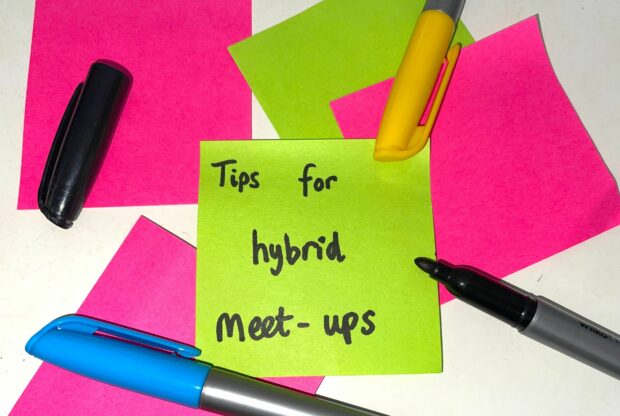
We’re having a lot of hybrid style meetings and meet-ups these days. Hybrid ones are those with people attending online and in person.
Here are some useful tips from our community leads and heads of profession, on how to get the best out of these sessions.
1 Tailor the format and content to accommodate your audience’s needs (for example, more broadcast content for larger groups versus more lean coffee style engagement in smaller groups)
2 Get a good external microphone for the presenter
3 Ensure your audience know what their expected contribution is in advance
4 Test the technology, equipment and tools before the event with both online and in-person participants
5 Use technology to make things better for everyone, for example Teams live transcription or live presentations in PowerPoint
6 Know who your on-site support teams are and make them aware of your meet-up in case you need help
7 Consider having an online facilitator separate from the in-person facilitator, to check online participants are ok and have what they need to contribute in an equitable way
8 Have a clear set of rules and share it at the start, such as:
- camera on if comfortable (this applies to in-person attendees too)
- use the raise hand function when you want to speak
- microphone off when not speaking
- turn notifications off
- light from in front, not behind
9 Leave room in the schedule for downtime, and be mindful of the neurodiverse needs of the audience (some people may need more uninterrupted time than others)
10 Have a back-up plan for all to go remote. For example, ask everyone to bring their own laptop and headset even if turning up in person
Do you have any other tips or insights? Whatever your role or area of interest or expertise, we welcome your thoughts. You can comment below or get in touch on Twitter.
Follow DfE Digital and Technology and Alex on Twitter.
1 comment
Comment by Kieron White (WCL) posted on
For hybrid workshops, I have found it useful to have a 'spare' laptop camera focused on the flipchart (with microphone muted) to help include online attendees. Or use an online whiteboard like Mural or Miro.